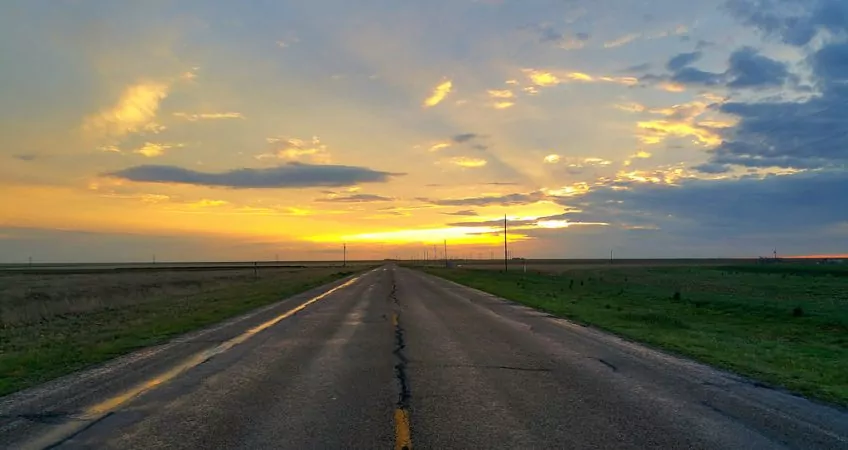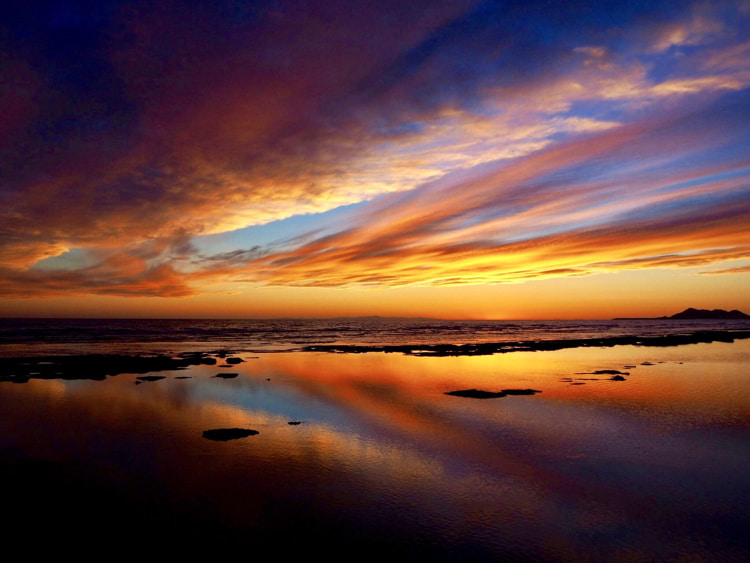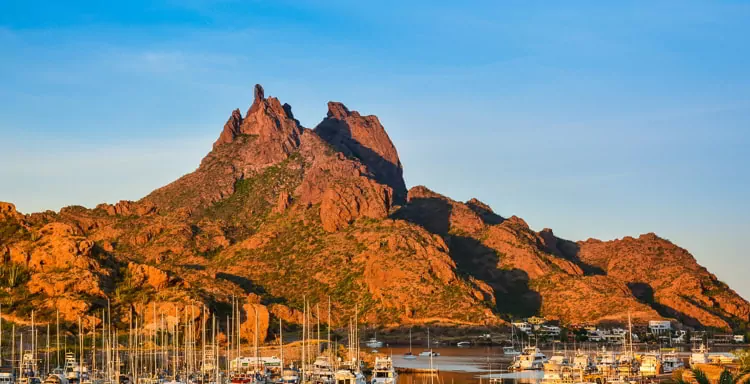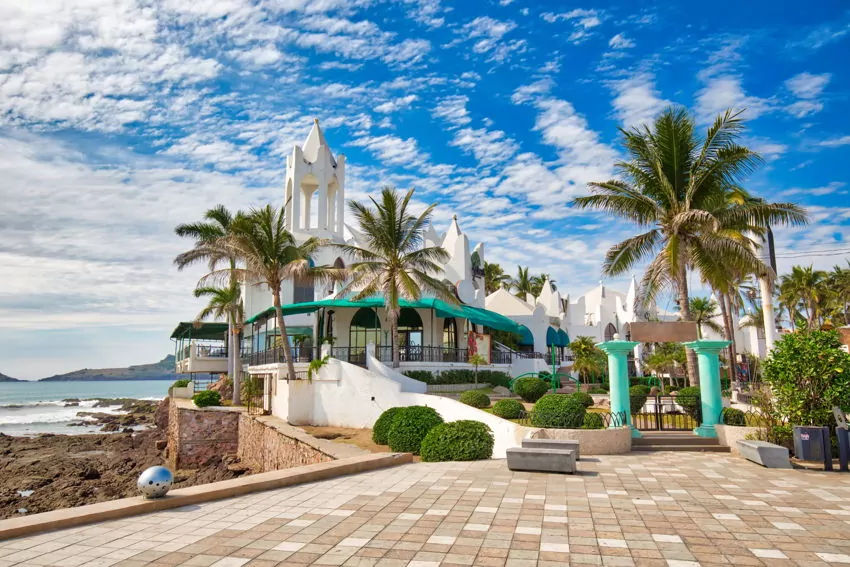
3 Popular Seaside Towns In Mexico Within Driving Distance Of U.S.
Your Easiest Second Home In The Sun For Fun And Profit
As I explained to the entire group assembled in Cancún last week for our Live and Invest in Mexico Conference, the most valuable convenience you can hope for when purchasing a home abroad is the ability to load up the car and drive to it.
And this is one of Mexico’s biggest advantages.
During the meetings in Cancún last week, we looked at many appealing and interesting places across this big, diverse country, including three popular spots on the Sea of Cortez, all within a day’s drive of the U.S. border: Puerto Peñasco, San Carlos, and Mazatlán.
The Sea of Cortez is the body of water that separates Baja California from the Mexican mainland; it’s also known as the Gulf of California. It starts at the mouth of the Colorado River and is noted for its warm, calm, and relatively protected waters, as well as for being one of the most biologically diverse seas on earth.
Anyone who has driven to western Mexico from the United States has likely skirted along the Sea of Cortez. This region of Mexico has a great deal to offer both the expat and the overseas property investor, including:
- It enjoys the conveniences of U.S. living, including franchises, big-box stores, and U.S. products;
- Many people here, including virtually all service providers, speak English;
- At specific points you find big English-speaking expat communities;
- The weather is just about perfect in the winter, with balmy days and cool nights. But it’s far from perfect in the summer. I believe the precise meteorological term is “Hot as Hell”;
- The sportfishing is excellent on this sea and a big tourism draw for the area;
- Property taxes are extremely low, even for properties on the beach. You can expect to pay between US$200 and US$400 per year.
Three Recommendations For Your Second Home In Mexico
Here’s what you should know about three particularly attractive choices along this coast both for living and retiring and also for making an overseas property investment:
Puerto Peñasco (AKA Rocky Point), Sonora

- Drive time from U.S. border: 1 hour 10 minutes, 62 miles (100 kms).
- No direct flights to the United States or Canada.
Puerto Peñasco enjoys miles of wide, sandy beaches bordered by the waters of the Sea of Cortez… waters that are warm, clear, and calm all year long. The grade going into the water is gentle, making it perfect for small children.
Puerto Peñasco sees 362 days per year of brilliant sunshine… which is about as close to always as you can get. This is no surprise, as the town is on the edge of the Altar Desert, one of the driest and hottest in the Americas.
If you’re a boater, you’ll appreciate the large sheltered marina, which hosts both commercial and pleasure craft.
Best of all, beachfront homes here are a real bargain.
This popular destination is known as Puerto Peñasco in Spanish, Rocky Point in English. Surprisingly, it had its English name first, in 1826, thanks to a retired Royal Navy admiral who was in the area scouting for precious metals. The Mexican president renamed the town in the 1930s.
Any discussion of Puerto Peñasco has to begin with the fact that it’s only 62 miles (100 kms) from the U.S. border, a drive that takes about 1 hour and 10 minutes. It’s just over three-and-a-half hours by car from Phoenix and six hours from San Diego.
Properties in Puerto Peñasco, including properties right on the beach, can be quite a bargain. I particularly like and recommend the beachfront development called Las Gaviotas because it’s on the beach, within walking distance to downtown, and prices are low. Units here rent for about US$125 daily, US$1,200 per month, and you’ll often see listings for US$110,000 to US$150,000.
As of today, a walk-out-onto-the-sand townhouse will run you US$204,000, beachfront condos start at about US$149k in good areas, and an ocean-view home (three blocks in from the beach) will set you back US$109k. Luxury properties in high-end developments can exceed US$500k.
Disadvantages of Puerto Peñasco:
- Puerto Peñasco does not have an attractive historic center. You have better options for enjoying a downtown lifestyle near the sea.
- The seafront restaurant district is fairly touristy, so it’s hard to enjoy the malecón (seafront promenade) without the annoyances of vendors and tour guides looking for your business.
- There are no big cities nearby, meaning you have to travel a bit for the practical items that big cities offer. Your best bet for a real city is probably Tucson, Arizona.
Advantages of Puerto Peñasco:
- Puerto Peñasco is just over an hour from Arizona. When I’ve made the drive, I haven’t had to stop for any customs or immigration checks after crossing at Lukeville, Arizona. Also, no vehicle permit is required this close to the border.
- Puerto Peñasco has a large expat community, and you’ll have plenty of neighbors from Arizona and California.
- U.S. dollars are accepted almost everywhere, except at the gas station. You’ll get a better deal spending pesos, but it’s nice to know you can use dollars in a pinch.
San Carlos, Sonora

- Drive time from U.S. border: 5 hours and 15 minutes, 261 miles (421 kms).
- No direct flights to the United States or Canada.
Miles of sandy beaches… clear, warm waters… excellent diving… and a large expat community. These are the things that come to mind when I recall San Carlos.
San Carlos is a popular drive-to destination for people in the western United States and Canada. It’s as far south as you can go in western Mexico without having to get a vehicle permit. I first traveled to San Carlos from Álamos on the recommendation of our real estate agent there who pointed out that some Álamos residents also own second homes in San Carlos.
The city was born as a well-planned tourist destination in the mid-1950s. Before this time, it had been three large ranches. This means San Carlos has no colonial historic center… but neither does it have the poverty or run-down neighborhoods that you might expect in a real city.
The town has a positive, upbeat atmosphere, bolstered by the abundance of cheerful cafés, bars, shops, and restaurants. Most venues cater to the American and Canadian residents, so you’ll see plenty of burger joints along with a good selection of seafood restaurants.
Sandy beaches highlight the entire area, bordering warm, calm waters. The city sits at the top of a giant cove, and the San Carlos coastline actually runs east to west, rather than north to south. In town, the 1.5 miles (2 kms) of beaches are mostly behind oceanfront homes and buildings. But as soon as you leave town and head down the coast, you encounter over 3 miles (4.9 kms) of beautiful, uninterrupted beach. Heading north, it’s just as beautiful.
San Carlos is a noted diving destination, with visibilities commonly in excess of 100 feet (31 meters) and sometimes over 200 feet (61 meters). It’s also a sportfishing destination and a good place for boaters, with two good marinas.
San Carlos is an easy drive down Highway 15 from Arizona, on what they call the “Hassle Free Highway.” (The hassle-free label refers to absence of vehicle permits and customs… not the absence of speed limit enforcement.)
Properties in San Carlos are a good deal. A modern two-bedroom, 1,400-square-foot, on-the-sand condo starts at about US$200,000. The best deal I saw on a house was a two-bedroom, one-bath, 1,300-square-foot (120-square-meter) home just one “realtor block” in from the beach (234 meters actual distance). The asking price was only US$83,000. A nice beachfront house on a large lot (in the Bahia sector) starts at US$325,000.
Disadvantages Of San Carlos:
- San Carlos is a planned city that came into being fairly recently. It doesn’t have the feel of Mexican heritage that you find in most Mexican cities… though many homes have been built in the colonial style.
Advantages Of San Carlos:
- It’s an easy drive from the U.S. border, with no vehicle permit required. Like Puerto Peñasco, San Carlos lies in Sonora’s “free zone” and also enjoys reduced customs requirements.
- It’s a noted dive location, with good diving facilities.
- San Carlos has two nice marinas with plenty of slips.
- It’s adjacent to a real city (Guaymas), with good services and commercial establishments.
Mazatlán, Sinaloa

- Drive time from U.S. border: 14 hours, 723 miles (1,165 kms).
- Four nonstop flights to the United States and five to Canada.
Mazatlán, where I’m currently spending most of my time, is a long-time, well-developed resort city on the Mexican coastal mainland opposite the tip of Baja California. It’s a fairly large city, with the resort areas and historic center along the coast… and the non-resort sectors—the seaport, tuna fleet, and industrial area—farther inland. As you can imagine, most expats and part-year residents live on or near the coast.
One thing that sets Mazatlán apart is that it has a large and well-maintained colonial historic center. In fact, recently, road crews converted the paved roads in Centro back to cobblestones. They also widened the boardwalk, added bike lanes, expanded many of the sidewalks, and improved the lighting.
However, what originally made Mazatlán famous were the beaches… about 20 miles (32 kms) of white sand, bordering clear, warm waters, with a boardwalk running adjacent to the beach for about 10 miles (16 kms).
Because Mazatlán is a real city as well as a beach town, you’ll also find a good offering of big city amenities… things like hospitals, theater, jazz, classical concerts, and fine dining, along with the waterfront seafood restaurants and beach scene.
The city also offers several golf courses, a large marina district with good marine facilities, and residential developments. Sportfishing is a big attraction in Mazatlán, with a good-sized fleet of boats to service the influx of anglers going for sailfish, wahoo, mahi-mahi, and yellowfin tuna, as well as the area’s record-setting marlin.
Properties in Mazatlán vary from basic vacation construction to high-end luxury. A large, two-bedroom beachfront condo just north of the Golden Zone (away from the historic center) starts at about US$199,000. A three-bedroom, 2,100-square-foot (192-square-meter) waterfront home in the marina districtgoes for US$189,000.
A two-bedroom unit at one of the best luxury addresses on the water starts at about US$340,000. If you want a luxury seafront unit in the historic center, you’ll pay about US$350,000.
Disadvantages Of Mazatlán:
- If you’re driving, it’s at the limit of a one-day drive. I break it into two days when I travel to and from the United States, while our younger family members do it in one.
- In the Golden Zone (the main tourist area), you’ll find plenty of touristy annoyances, such as tour guides and vendors. As a resident, you probably won’t spend much time there.
- Mazatlán is mostly a Mexican resort, and Mexicans are not known for their quiet partying… so it can get noisy downtown on weekends and holidays.
Advantages Of Mazatlán:
- It offers city amenities, such as theater, orchestra, and city-style shopping.
- You’ll find plenty of fine dining, cafés, and hole-in-the-wall bars to enjoy.
- Most of the beaches are directly accessible, without buildings blocking access.
- You have a variety of lifestyles to choose from: quiet or bustling… historic or modern… expat areas or those more popular with well-off Mexicans.
- Convenient flights make the trip to Phoenix in less than two hours.
Is A Home On The Sea Of Cortez For You?
Puerto Peñasco is perfect if you’re in the market for a convenient, short-term getaway and I’d say one of the best possible options for the part-time or vacation homeowner. Depending where you live in the United States, it can even be an easy long weekend escape.
San Carlos is still within an easy drive of the United States and offers more amenities for the expat or part-time resident. It’s also a better base of exploration, from which you can discover more of interior Mexico.
Mazatlán is best for full-time or long-term living, offering the chance to combine colonial city living with a beachside lifestyle.
If you’re looking for an easy-access seaside home or rental investment, one of these cities could well be the answer.
Lee Harrison



